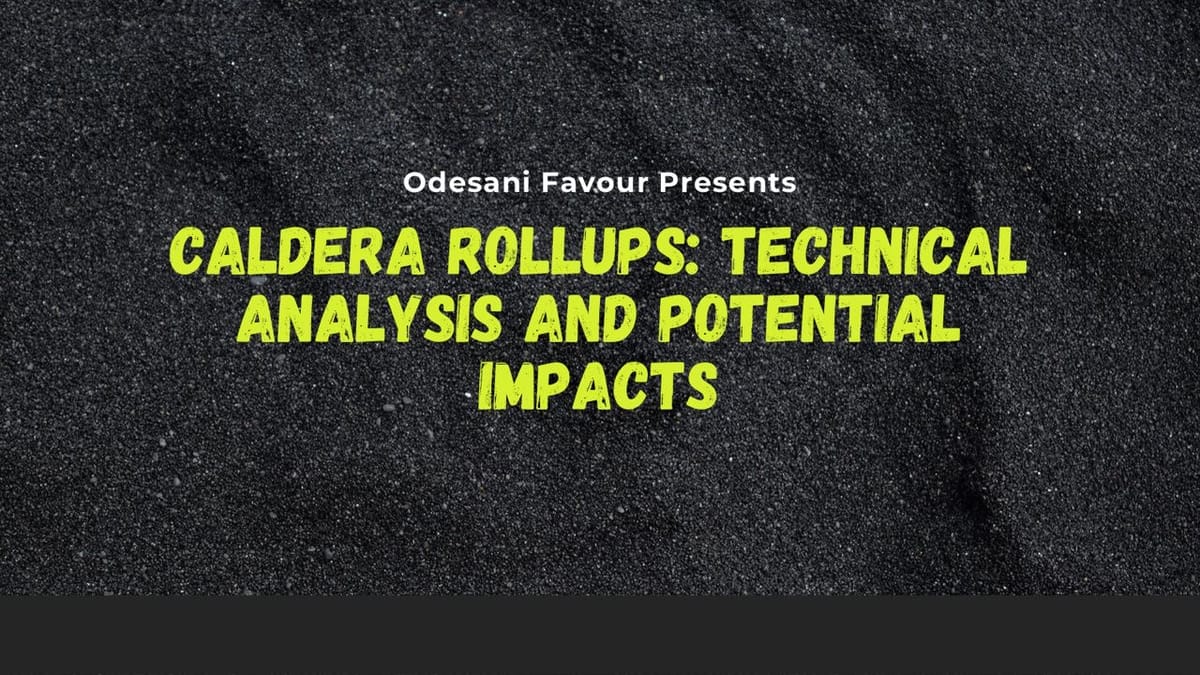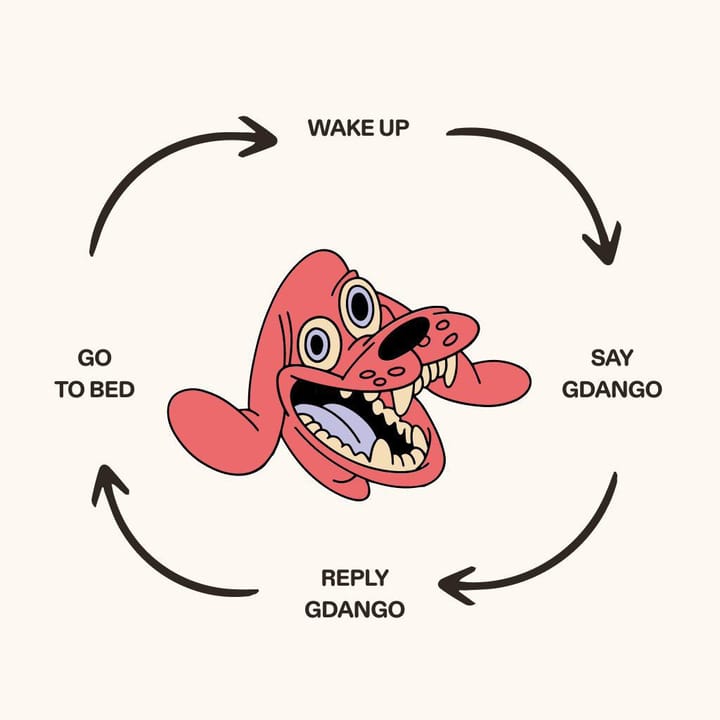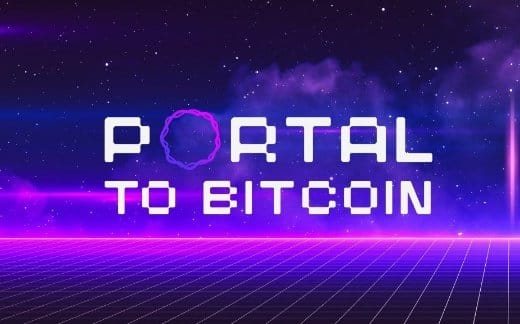Caldera Rollups: Technical Analysis and Potential Impacts

Introduction
As blockchain technology evolves, scalability remains a critical challenge for widespread adoption. Ethereum, the leading smart contract platform, has faced issues with high gas fees and slow transaction speeds during peak usage. Layer 2 (L2) solutions, particularly rollups, have emerged as a promising answer to these challenges. Among the platforms advancing rollup technology, Caldera stands out with its Rollup-as-a-Service (RaaS) platform, enabling developers to deploy customizable, high-performance rollups with ease. In this article, we explore the technical underpinnings of Caldera rollups, their innovative features, and their potential impacts on the blockchain ecosystem.
In this article, we would explore:
1. The Technical Architecture of Caldera Rollups: How Caldera’s infrastructure leverages modular design and leading rollup frameworks to deliver scalability and customization.
2. The Metalayer and Interoperability: Caldera’s vision for a unified rollup ecosystem and its implications for cross-chain connectivity.
3. Potential Impacts on Web3 Development and Adoption: How Caldera’s RaaS platform could reshape decentralized application (dApp) development, user experience, and Ethereum’s scalability.
The Technical Architecture of Caldera Rollups
Caldera’s RaaS platform simplifies the deployment of application-specific rollups, abstracting away the complexities of blockchain infrastructure. Rollups are L2 scaling solutions that process transactions off-chain while leveraging the security of a Layer 1 (L1) blockchain, such as Ethereum, for settlement. Caldera supports both Optimistic Rollups and Zero-Knowledge (ZK) Rollups, offering developers flexibility to choose the framework that best suits their needs.
Core Components
- Rollup Frameworks: Caldera supports leading stacks like Arbitrum Nitro, Optimism Bedrock, ZK Stack, and Polygon CDK. For example, Arbitrum Nitro enables Optimistic Rollups with low-cost transactions and Ethereum equivalence, while ZK Stack leverages zero-knowledge proofs for faster finality. Developers can deploy rollups with just a few clicks via Caldera’s intuitive dashboard, eliminating the need for deep blockchain expertise.
- Modular Design: Caldera embraces a modular blockchain philosophy, separating execution, consensus, settlement, and data availability (DA) layers. Developers can customize parameters like gas limits, block times, or fee structures. For instance, a gaming dApp might prioritize low-latency transactions by selecting a high-performance server and Celestia for DA to reduce costs.
- Data Availability Options: Caldera integrates with DA layers like Celestia, EigenDA, and NEAR, enabling 10–100x cost reductions compared to storing data on Ethereum. This flexibility is crucial for high-throughput applications like Web3 games or social platforms.
- EVM Compatibility: Caldera rollups are fully compatible with the Ethereum Virtual Machine (EVM), allowing developers to use familiar tools like Solidity, MetaMask, and Hardhat. This ensures a seamless transition for Ethereum developers.
For Example: Consider a decentralized exchange (DEX) deploying a Caldera rollup using Arbitrum Nitro. The DEX customizes its rollup to support high-frequency trading with sub-second block times and uses USDC as the native gas token to simplify user onboarding. By settling transactions on Ethereum and using Celestia for DA, the DEX achieves low fees and high throughput while maintaining Ethereum’s security.
Technical Advantages
- Scalability: Caldera rollups can process hundreds to thousands of transactions per second, compared to Ethereum’s 15–30 TPS.
- Cost Efficiency: By batching transactions off-chain, rollups reduce gas fees significantly. For example, Arbitrum Nitro offers 10–100x cheaper transactions than Ethereum.
- Security: Rollups inherit Ethereum’s robust security through L1 settlement, avoiding the risks of newer L1 blockchains like Terra or Harmony.
Caldera’s architecture empowers developers to launch production-ready rollups in under 30 minutes, democratizing access to scalable blockchain infrastructure.
The Metalayer and Interoperability
Fragmentation is a growing challenge in the Ethereum L2 ecosystem, with rollups operating as isolated chains. Caldera’s Metalayer, a cross-chain interoperability framework, aims to unify rollups into a cohesive network, enabling seamless asset transfers and communication across different frameworks.
How the Metalayer Works
- Intents Engine: The Metalayer’s core is an intents-based execution engine that simplifies cross-chain operations. Developers define high-level intents (e.g., “transfer 10 USDC from Rollup A to Rollup B”), and the engine handles the underlying complexity. This reduces development time and improves user experience.
- Hyperlane Integration: Built on Hyperlane’s message-passing protocol, the Metalayer supports 1-to-1 and many-to-1 communication between rollups. For example, a user on Manta Pacific (a Caldera rollup) can interact with ApeChain without needing to understand the bridging process.
- Unified Liquidity: By connecting rollups, the Metalayer reduces liquidity fragmentation. Instead of liquidity being siloed on individual L2s, it can flow freely, improving capital efficiency for DeFi protocols.
- Multi-Framework Support: The Metalayer bridges Optimistic and ZK rollups across stacks like Arbitrum, Optimism, and ZK Stack, fostering interoperability without requiring developers to rewrite code for each framework.
For Example:Imagine a Web3 social platform deployed on a Caldera rollup using Optimism Bedrock. Users can mint NFTs on this rollup and trade them on a marketplace hosted on an Arbitrum-based rollup. The Metalayer enables trustless, near-instant transfers of NFTs and payments between the two rollups, abstracting away the technical details. This creates a seamless user experience akin to interacting with a single chain.
Potential Challenges
- Latency: Cross-chain communication introduces slight delays, though Hyperlane’s optimized protocol minimizes this.
- Security Risks: Interoperability frameworks must be rigorously audited to prevent vulnerabilities in message passing or bridging. Caldera’s partnership with Hyperlane, a battle-tested protocol, mitigates this risk.
- Adoption: The Metalayer’s success depends on widespread adoption by rollup developers. Caldera’s ecosystem, with over 50 rollups and $800M in TVL, positions it well to drive this shift.
The Metalayer could redefine Ethereum’s L2 landscape by creating a unified ecosystem where rollups complement rather than compete with each other, unlocking new possibilities for multi-rollup applications.
Potential Impacts on Web3 Development and Adoption
Caldera’s RaaS platform and Metalayer have far-reaching implications for developers, users, and the broader blockchain ecosystem. By lowering barriers to entry and enhancing scalability, Caldera is poised to accelerate Web3 adoption.
Impacts on Developers
- Simplified Deployment: Caldera’s one-click deployment eliminates the need for in-house blockchain engineers, reducing costs and time-to-market. For example, a startup can launch a rollup for a DeFi protocol in minutes, compared to months of engineering work traditionally required.
- Customization: Developers can tailor rollups to specific use cases, such as low-latency gaming or high-throughput DeFi. This flexibility enables innovation in niche markets like NFT ticketing or enterprise applications.
- Ecosystem Integration: Caldera’s partnerships with tools like block explorers, oracles, and bridges provide a robust developer experience. For instance, integrating Chainlink oracles into a Caldera rollup is seamless, enabling real-world data feeds for dApps.
Impacts on Users
- Lower Costs: Caldera rollups reduce transaction fees by 10–100x, making Web3 accessible to a broader audience. For example, a user playing a Web3 game on ApeChain pays fractions of a cent per transaction, compared to $1–$10 on Ethereum during peak times.
- Improved UX: The Metalayer’s interoperability simplifies cross-chain interactions, reducing the need for users to navigate complex bridging interfaces. This could drive mainstream adoption by making Web3 feel as intuitive as Web2 applications.
- New Use Cases: Caldera’s scalability enables high-throughput applications like social media platforms or real-time trading, which were previously infeasible on Ethereum due to cost and speed constraints.
Impacts on Ethereum’s Ecosystem
- Scalability Solution: Caldera’s rollups address Ethereum’s scalability bottleneck, allowing the network to handle millions of transactions daily without compromising security. This could solidify Ethereum’s position as the leading smart contract platform.
- Reduced Fragmentation: The Metalayer counters the fragmentation caused by competing L2s, fostering a cohesive ecosystem where liquidity and users are shared across rollups.
- Innovation Catalyst: By enabling rapid deployment of custom rollups, Caldera empowers developers to experiment with novel token designs, governance models, and application architectures, driving Web3 innovation.
For Example: A Web3 gaming studio launches a Caldera rollup using ZK Stack to support a massively multiplayer online game. The rollup processes thousands of in-game transactions per second at near-zero cost, settling on Ethereum for security. Players trade in-game assets across other Caldera rollups (e.g., a marketplace on Arbitrum) via the Metalayer, creating a vibrant, interconnected economy. This scalability and interoperability attract millions of players, showcasing Web3’s potential to rival traditional gaming platforms.
Broader Implications
Caldera’s $25M in funding from investors like Founders Fund and Sequoia Capital signals strong market confidence in its vision. With over 50 rollups, 1.7M unique wallets, and 500M+ transactions processed, Caldera is already a leader in the RaaS space. Its acquisition of Hook, a team with real-world rollup experience, further accelerates product development. As Ethereum’s L2 ecosystem grows, Caldera’s focus on interoperability and ease of use could make it the “AWS of blockchains,” enabling a new wave of decentralized applications.
Conclusion
Caldera’s rollup platform is a game-changer for blockchain scalability, offering a technically robust and user-friendly solution for deploying application-specific rollups. Its modular architecture, support for leading frameworks, and innovative Metalayer address critical challenges in Ethereum’s L2 ecosystem, from high costs to fragmentation. By empowering developers to launch scalable, interoperable rollups, Caldera is paving the way for Web3’s next phase of growth. As adoption increases, Caldera’s impact could extend beyond Ethereum, shaping the future of decentralized technology and bringing blockchain closer to mainstream use.



Comments ()